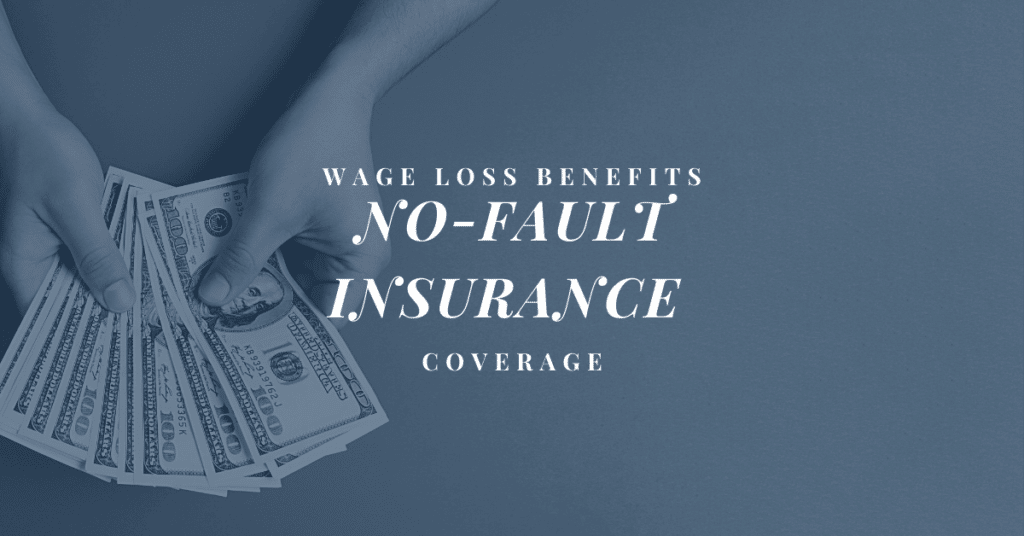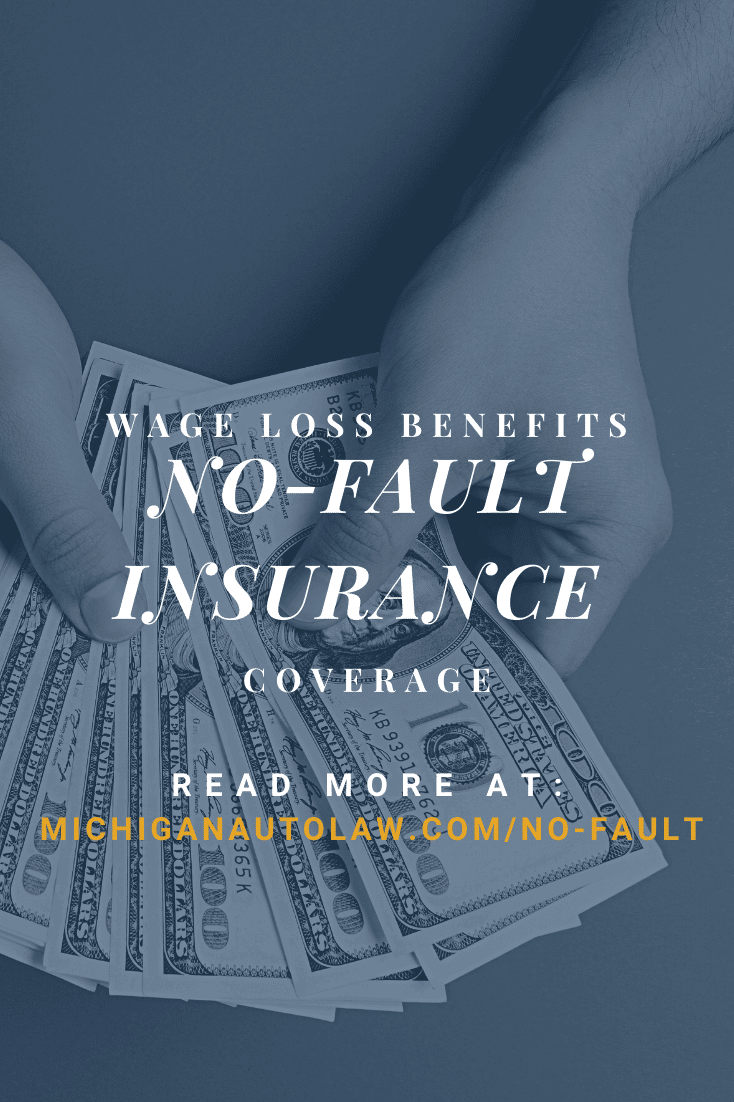
Michigan Wage Loss Benefits: No-Fault Insurance Coverage
Michigan wage loss benefits is one of the PIP benefits that car accident victims are entitled to under Michigan’s No-Fault law. It reimburses car accident victims for wages and income they lose because their accident-related injuries have disabled them from returning to work.
Paid to car accident victims regardless of fault, these Michigan No-Fault benefits provide an essential, financial lifeline for victims and their families as they recover from their injuries and begin rebuilding their lives.
What are Michigan wage loss benefits?
When a car accident victim’s injuries prevent him or her from returning to work, Michigan wage loss benefits will reimburse him or her for the “loss of income from work [he or she] would have performed . . . if he or she had not been injured.” This is covered by No-Fault personal protection insurance.
How long can a person collect Michigan PIP work loss benefits?
A car accident victim is entitled to Michigan PIP work loss benefits “during the first 3 years” after the car accident. However, if the victim’s injuries continue to disable him or her from working beyond the 3-year limit, the victim can sue the at-fault driver who caused the accident for the “excess” amount.
How much does this insurance pay?
No-Fault insurance reimburses a car accident victim for his or her lost wages up to a monthly maximum that is adjusted every reflect to reflect changes in the cost of living. For wages lost beyond the monthly maximum, the victim can sue the at-fault driver who caused the accident for the “excess”.
What is the Michigan No-Fault wage loss benefits maximum?
The Michigan No-Fault wage loss benefits maximum is $6,811 per month for the period of October 1, 2023, through September 30, 2024.
Previously, it was $6,615 per month for the period of October 1, 2022, through September 30, 2023. Before that, it was $6,065 per month for the period of October 1, 2021, through September 30, 2022. It was $5,755 per month for the period of October 1, 2020, through September 30, 2021, and it was $5,718 per month for October 1, 2019, through September 30, 2020.
The monthly maximum that applies to a person’s claim for benefits is the monthly maximum that was in effect at the time that his or her motor vehicle accident occurred.
Will No-Fault insurance reimburse me for all of my lost wages?
No. Michigan wage loss benefits under the No-Fault law will only reimburse you for 85% of your wages.
Do I have to pay taxes on Michigan work loss benefits?
No. Michigan wage loss benefits “are not taxable income” and, thus, you don’t have to pay taxes on these payments you receive from your auto insurance company.
How do I claim these work loss benefits?
To collect No-Fault work loss benefits after you were injured in a car accident, you must file a No-Fault application with the applicable auto insurance within ONE YEAR from the date of your car accident. (MCL 500.3145(1))
To substantiate your claim for this assistance, you will also need to provide: (1) proof of income lost from not returning to work (such W2s or pay stubs for the two months that preceded the car accident); (2) a work disability certificate from your doctor; and (3) wage verification from your employer (accomplished by having your employer fill out a “Michigan Motor Vehicle No-Fault Insurance Law Wage, Salary and Benefits Verification” form).
Importantly, if you fail to file your No-Fault application (which is also called an “application for No-Fault benefits” or “notice of injury”) on time – within one year from the date of your car accident – then you will forever lose these benefits to which you might be entitled.
Who pays for these No-Fault benefits?
If you have your own auto insurance policy in which you are the “named insured,” then your own No-Fault auto insurer will pay for your Michigan wage loss benefits.
Otherwise the No-Fault law’s “priority” rules will determine what insurer is responsible. Generally – albeit subject to certain exceptions – if you don’t have a policy, then the applicable insurance company to pay your No-Fault medical mileage will be your spouse’s insurer or the insurer for a family member who lives with you.
If you don’t have coverage through any of these sources, then you will file your application for PIP benefits with the Michigan Assigned Claims Plan and they will assign an auto insurance company to pay for your benefits.
Can I get Michigan PIP work loss benefits if I was temporarily unemployed?
Yes. Michigan PIP work loss benefits are payable under the No-Fault law to car accident victims who were “temporarily unemployed at the time of” the car accident. The benefits will be based “on earned income for the last month employed full time preceding” the auto accident.
Injured and need a lawyer? Call Michigan Auto Law
If you have been injured in a car accident and you have questions about your legal rights to Michigan PIP benefits, you can call toll free anytime 24/7 at (800) 968-1001 for a free consultation with one of our experienced auto accident attorneys. You can also get help from an experienced accident attorney by visiting our contact page or you can use the chat feature on our website.






